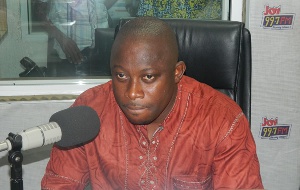The Ministry of Power has reacted to publications in the media about project vehicles purchased for the implementation of US$350 million Weldy Lamont Associates Self Help Electrification Project (SHEP) facility.
A statement signed by Mr Edward Bawa, Head of Communications at the Ministry and copied to the Ghana News Agency in Accra on Wednesday, said the US$350 million US EXIM facility was a sole sourced agreement for which negotiations started in 2006.
It said the facility was given Executive approval by the then President on July 17, 2008, and subsequently, Parliament gave its approval on August 15, 2008.
“Under the US EXIM funded facility which is being executed by Weldy Lamont Associates, 85 per cent of all project-related materials, including vehicles, must be procured from manufacturers in the United States of America,” it said.
The statement said, in line with the agreement, 85 per cent of all project-related materials, including all vehicles were procured in U.S. models and the said vehicles, which were negotiated as part of the project prior to 2009, were delivered in 2010.
It said in early 2009 when a new Minister of Energy assumed office, he carried out a Value for Money audit as a condition for contract effectiveness and after four rounds of hectic negotiations between the Government of Ghana Team and the contractor, which ended on 30 July, 2009, the price of materials was reviewed downwards, leading to savings of US$46 million.
“This resulted in the construction of new substations in Kintampo and Mim as well as the expansion of the Sunyani substation. Local content was also increased from the originally agreed 15 per cent figure to 30 per cent and it enhanced the participation of Ghanaian-owned companies,” it said.
According to the statement, originally, the project was intended to benefit 1,200 communities but following the Value for Money audit in 2009 and reduction in scope of work in some communities, it was expanded to cover 2,130 communities in Ashanti, Brong Ahafo, Western and Central regions.
It said, about one thousand communities have so far been connected and the project is ongoing.
General News of Friday, 20 February 2015
Source: GNA

















